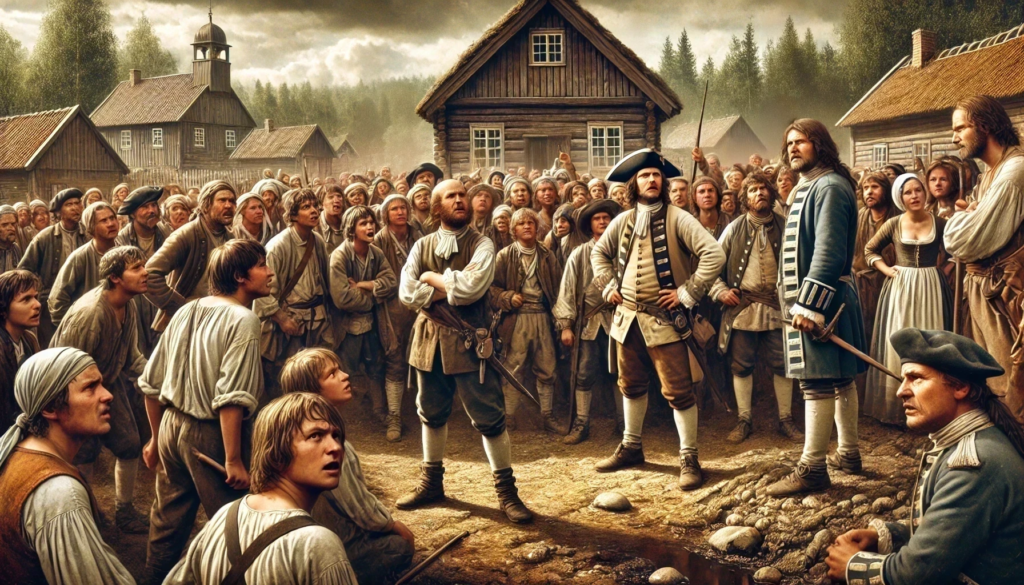One of the last large scale peasant uprisings in Sweden has been named The Great Dalecarlian Dance and took place in 1743.
It played out in a transition between the old peasant society and the modern era. What began as an old-fashioned peasant uprising ended in bloody street battles in Stockholm. Among the rebels’ demands, old ideas about a strong monarchy were mixed with more modern ideas about popular influence.
The peasants’ reasons for discontent however were nothing new; famine, taxes and conscriptions for war. But Sweden had changed a lot since the era of the Snapphanar at the end of the 17th century. The royal absolutism ended with the death of Karl XII in 1718, and what became known as “The age of liberty” began. Now it was the nobility who ruled, divided into two different parties – ”the Hats” and ”the Caps”.
The Hats, who had the majority, had started a war against Russia in 1741 which quickly became a disaster and the Russian forces captured most of Finland. The regiment from Dalarna had taken particularly heavy losses, and when new men were to be recruited from there, strong protests arose.

Dalarna, Sweden, 1743:
The dissatisfaction was boiling among those gathered outside the village hall. There stood an ensign, cowardly surrounded by soldiers, speaking to them as if they were disobedient children. He was trying to convince the young men of the parish to set off for yet another meaningless war.
Had they not seen enough men march away, never to return? Did they ever receive any reward for their sacrifices? In Dalarna, the people were starving, while the politicians and noblemen in Stockholm could eat their fill. They grew rich and fat while the people died. But no more!
More and more outraged voices expressed these feelings. The mood grew increasingly hostile, while the ensign raised his voice and commanded them to obey their superiors. But the conscripted men did not move. Not this time.
Jan Mattson, leader of the peasants in Dyviken, could no longer hold his tongue.
– We have no superiors! he declared loudly.
The assembled men shouted in agreement. The ensign finally seemed to understand that they were not going to follow him. And that his superiors could not help him here. He took flight. But the enraged crowd caught up with him, and blows and kicks began to rain down.
Jan realized that it was time. Time to show the ”superiors” that the peasants no longer intended to obey. It was time to march on Stockholm and demand their rights.
Another source of conflict was the succession issue. After the death of Karl XII, his sister Ulrika Eleonora became queen, and abdicated in favor of her husband, Fredrik I. However, the couple had no children, and the king was now old. The Danish prince Fredrik was the leading choice to be elected new monarch.
But the Hats received an offer from Elisabeth, Empress of Russia. She would return Finland to Sweden if they elected her relative, Adolf Fredrik, as king. The Hats agreed, which deeply upset the common people, who prefered the Danish prince to a German prince-bishop, at that related to the enemy in Russia.
So, in June 1743, the peasants of Dalarna began their march to the capital, to demand to be heard. Read more in the next post!
Source:
Adolfsson, Mats. Bondeuppror och gatustrider. Svenska uppror 1719 – 1932. (2007)

